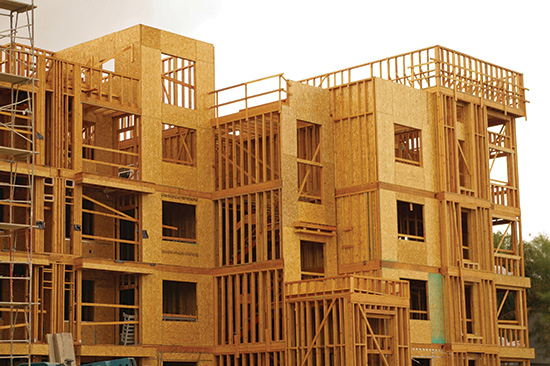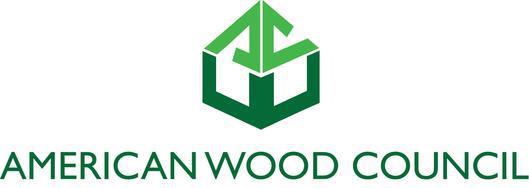Designing for Fire Protection
Safeguards during construction
IBC Chapter 33 provides minimum safety precautions for fire during construction and the protection of adjacent public and private properties. The section includes provisions for fire extinguishers, standpipes, means of egress, and sprinkler system commissioning. The IFC also contains detailed requirements for fire precautions during construction.
Fire Extinguishers
During construction, one portable fire extinguisher shall be placed at each stairway
on all floor levels with combustible materials, in each storage or construction shed and where special hazards exist, such as the storage and use of flammable and combustible liquids.
Maintaining Means of Egress
Required means of egress must be maintained at all times during construction, demolition, remodeling or alterations and additions to buildings. During construction, when a building height exceeds 40 feet above the lowest level of fire department vehicle access, a minimum of one temporary
Standpipes
In buildings required to have standpipes, not less than one standpipe shall be available during construction for fire department use. The standpipe shall be installed before the construction is 40 feet above the lowest level of fire department vehicle access. The standpipe is placed adjacent to usable stairs and has fire department hose connections. The standpipe is extended during construction to within one floor of the highest point of construction having flooring per IBC Section 3311. During demolition a standpipe shall be maintained in operable condition. The standpipe may be demolished floor by floor as demolition proceeds, but not more than one floor below the floor being demolished.
Sprinkler System Commissioning
The sprinkler system must be tested and approved before the certificate of occupancy is awarded per IBC Section 3312 and the building is occupied, except as provided in Section 111.3, temporary occupancy.
Fire watch during construction
The 2018 IFC, which is directly referenced and made applicable by Section 3302.3 of the 2018 IBC, has comprehensive requirements for fire watches and fire prevention that are to be performed by the building owner or contractor. In addition, Section 3314 of the IBC requires a fire watch in nonworking hours when construction exceeds 40 feet above grade, if required by the fire official.
Additional Requirements
Additional requirements in the IFC include:
▶
Temporary heating equipment must be listed and labeled; installation and maintenance of the equipment must be in accordance with the listing (IFC 3303).
▶
Smoking is prohibited except in approved areas with posted signage (IFC 3304).
▶
A fire watch must be maintained with qualified personnel if required by the fire code official and records of fire watch activities must be kept and provided when requested (IFC 3304).
▶
Welding operations must follow the provisions of IFC Chapter 35. Electrical wiring must follow the provisions of NFPA 70 (IFC 3304).
▶
The owner must designate a fire prevention superintendent responsible for the fire prevention program during construction. Requirements for the program are listed in IFC Section 3308.
▶
An accessible emergency phone is provided in an approved location at the construction site. The construction site street address and fire department emergency phone number must be posted by the phone (IFC 3309).
▶
Fire-fighting vehicle access must be provided within 100 feet of temporary or permanent fire department connections (IFC 3310).
▶ An approved water supply for fire protection must be available when combustible material is at the construction site (IFC 3312).
▶ Requirements for safeguards during roofing operations are listed in IFC Section 3317.
Summary
Wood construction offers advantages in terms of cost, design versatility and sustainability—while meeting code requirements for safety in buildings that range from schools and offices to mid-rise/ multifamily, civic, institutional, industrial and retail. Building codes focus on fire resistance and fire performance which improves occupant life safety, fire responder safety, exposure protection, and building integrity. Fire performance testing is giving way to regulating material combustibility. This provides building material manufacturers with a clear understanding of how products must perform in certain instances, while allowing designers greater flexibility in product selection. The 2021 IBC will contain new mass timber construction types, a first for model codes, which will allow wood structures to exceed the current height and area limits in the 2018 IBC. Wood has a history of proven structural and fire performance, and is making history with new mass timber products such as CLT, which offer exceptional strength and continue to expand the possibilities wood design. For more detailed information on the subjects covered in this CEU, a new version of the American Wood Council’s Code Conforming Wood Design based on the 2018 IBC is available as a free download at as a free download at www.awc.org.











